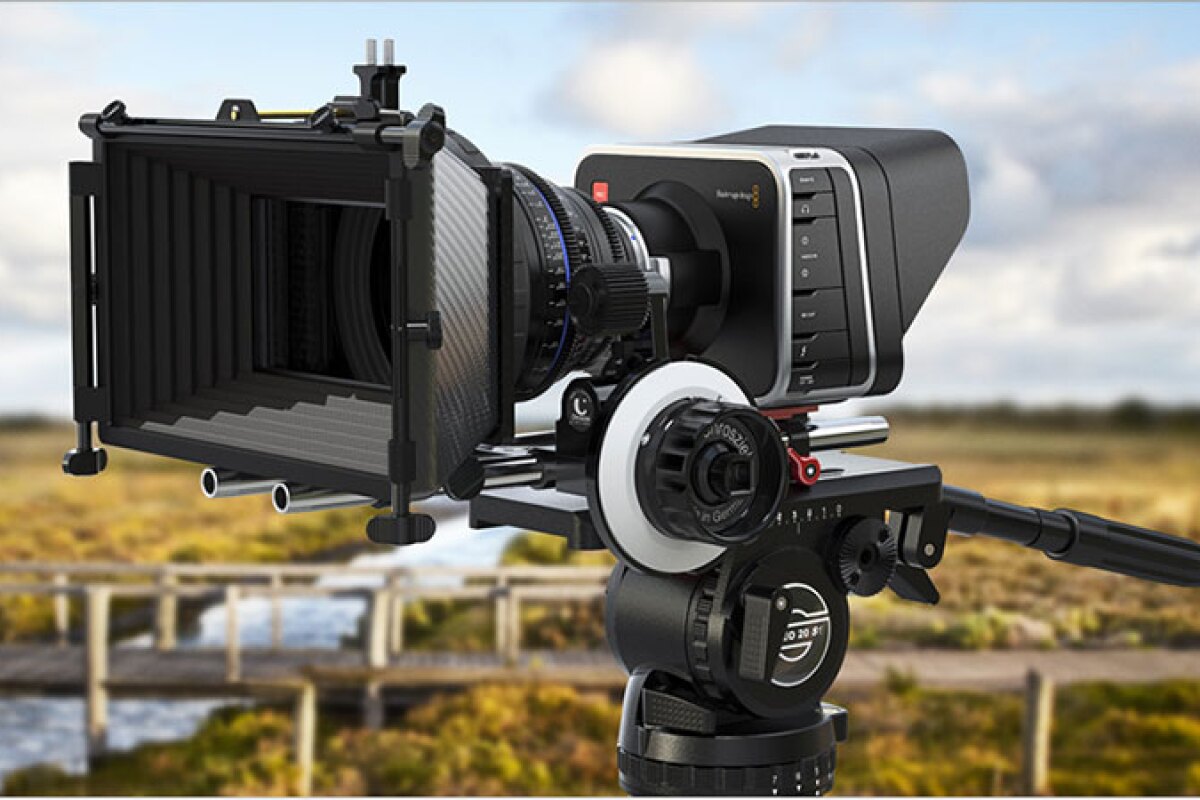Blackmagic Design, best known for its well designed, keenly priced video peripherals and the DaVinci color-grading software, has created quite a buzz at the 2012 National Association of Broadcaster’s Show in Las Vegas. Like RED did five years ago, BMD seems to have suddenly changed the game by announcing a new digital cinema camera that breaks all the accepted conventions - including price.
The camera has a super-clean design consisting of a machined aluminum block with a lens mount on one face and a slanted touch-sensitive screen on the other. The left side carries all the connection and the right carries a covered slot for an SSD drive.
There are a number of things that make this a digital cinema acquisition device as opposed to a video camera - a large(ish) sensor, wide dynamic range and the ability to capture RAW to the inbuilt solid state disc.
The Blackmagic Cinema Camera includes 13 stops of dynamic range, 2.5K sensor (FourThirds size, approximately 16.6 mm x 14 mm) , integrated SSD recorder that has the bandwidth to capture 12-bit CinemaDNG RAW, ProRes and DNxHD files, integrated capacitive touchscreen LCD for direct metadata entry, standard 1/4” (6.3 mm) jack audio connectors, refrigerated sensor and it's fully compatible with Canon EF and Zeiss ZF mount lenses.
The Camera also includes SDI and Thunderbolt connectors and it comes with a full copy of DaVinci Resolve and UltraScope software. This makes off-loading and grading your RAW footage on set a potentially speedy process - the DaVinci software is worth $995 on its own.
Oh, the price? US$2,995 (£1,880/€2,275). I paid twice as much for my first Sony DV camcorder.

The camera records at 24, 25 and 30 fps and no files are custom in any way. It records into CinemaDNG format for RAW files, and DNxHD or ProRes for HD resolution files compatible with Avid Media Composer and Apple Final Cut Pro. The SSD discs are formatted as MacOS Extended discs.
You can play back all recorded files on the LCD, and there is a built-in microphone and speaker for reviewing audio. Of course you can plug in high quality audio into the standard jack connectors and the audio is always recorded uncompressed.
The integrated LCD has a touchscreen and when tapped, a window called the "slate" appears where you can type in shot information just like typing on a smartphone. This is then recorded into the file as metadata in the Final Cut Pro X and DaVinci Resolve format. Common data like shot number can auto increment to save time.
You can also change camera settings on the touch LCD, such as frame rate, shutter angle, color temperature, dynamic range, focus assist settings and more. The SDI output also has overlays showing you all the camera data when monitoring on set, and even the same data when playing back recorded files.
Obviously there are some compromises when compared to more expensive digital cinema cameras. No overcranking for slow-motion, no Super-35 mm sized sensor, no cinema style PL mount (though that looks possible) and of course it’s not 4K. But frankly it makes some of those cameras look silly for the price. Sony, Canon and to a lesser degree Panasonic, even Arri - the titans of moving picture acquisition over the years are starting to look shaky. Canon’s convolutions over technology, features and pricing for its cinema range are thrown into sharp relief against the sheer simplicity and compatibility of this offering from Blackmagic Design.
The Blackmagic Cinema Camera is due to go on sale in July ... and likely to be sold out a couple of days afterwards.
Source: Blackmagic Design













